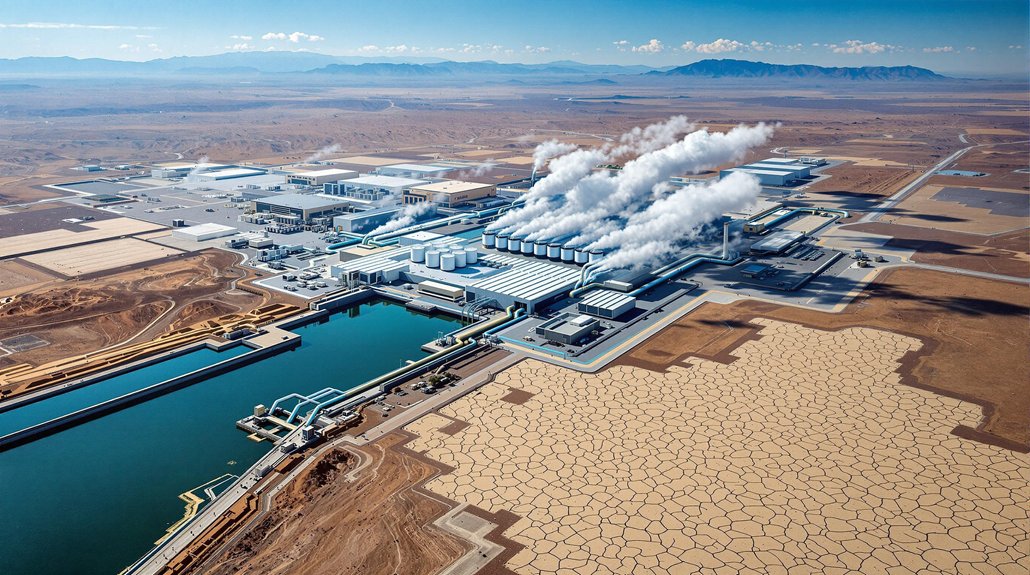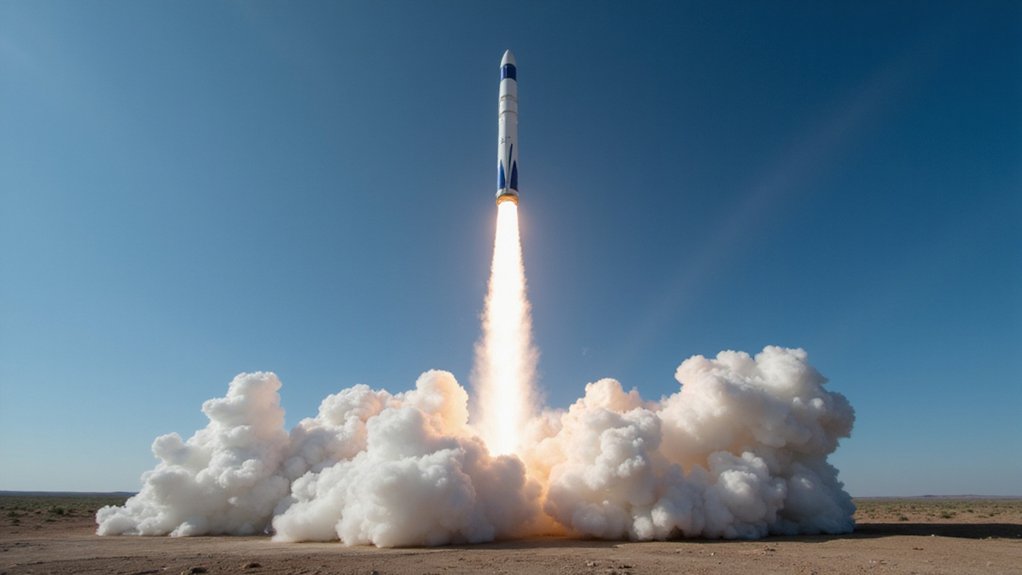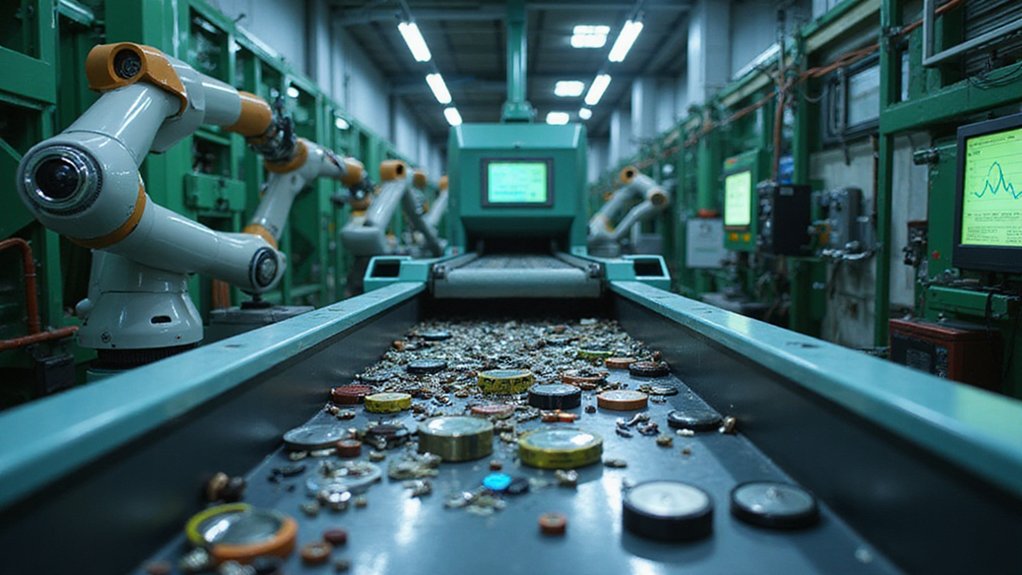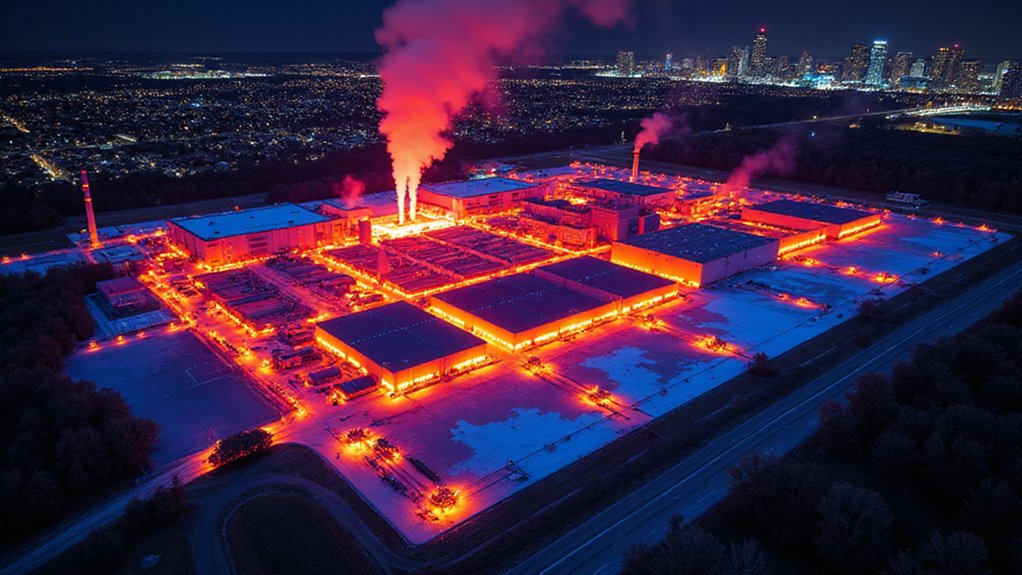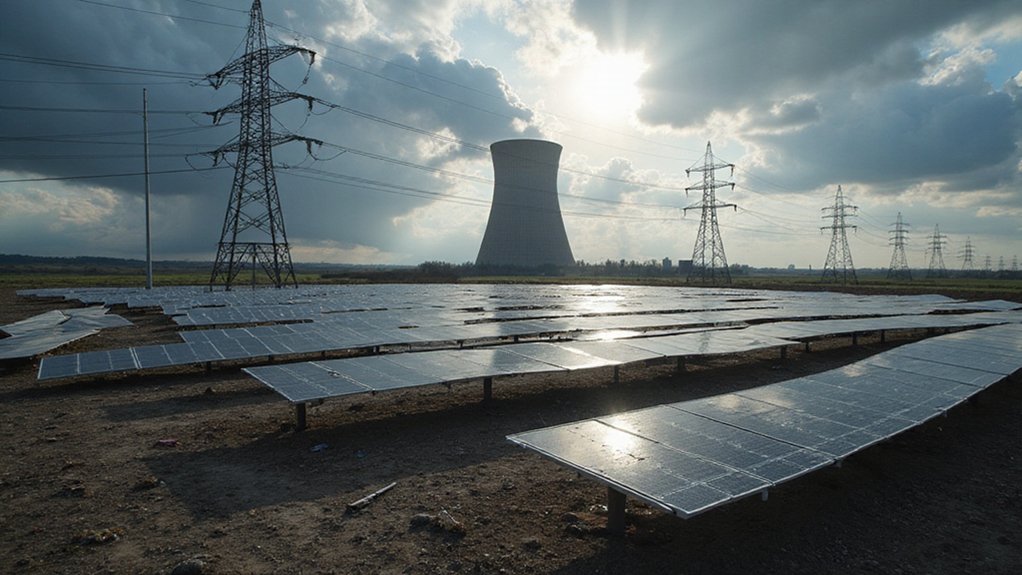Data centers powering our digital world consume massive amounts of water for cooling. Large facilities use millions of gallons daily, with many operating in water-stressed regions. Tech giants like Microsoft and Google report significant water usage in areas already facing scarcity. Some companies are pursuing water positivity goals and recycling systems, but consumption continues to grow. As half the world’s population may face water stress by 2025, the tech industry’s water footprint raises urgent sustainability questions.
Droplets of water have become as vital as electricity in powering the digital world. As artificial intelligence expands globally, data centers are consuming water at alarming rates to keep their servers cool. These digital factories never sleep, requiring constant cooling that’s putting pressure on our planet’s water resources.
Water has become the unsung liquid currency of AI, flowing endlessly to keep our digital world from overheating.
The numbers tell a concerning story. Hyperscale data centers operated by companies like Google use about 550,000 gallons of water daily, adding up to 200 million gallons per year. Even smaller facilities consume up to 88,000 gallons each day. A single large data center may use between 3 to 5 million gallons of potable water daily – equal to what thousands of households would use.
What’s more troubling is where this water comes from. About 42% of Microsoft’s data center water consumption in 2023 occurred in water-stressed regions. Google reports that 15% of its freshwater withdrawal happens in areas already facing water scarcity. One-fifth of American data centers operate in regions where water is already in short supply.
The problem isn’t just how much water is used but what kind. Many facilities rely on drinking-quality water that could otherwise serve communities and agriculture. As water evaporates during cooling processes, it’s permanently removed from local water cycles.
This growing thirst creates real-world impacts. When data centers and communities compete for the same water sources, it can disrupt local ecosystems and farming activities. Virginia, home to the world’s largest concentration of data centers, saw water usage rise from 1.13 billion gallons in 2019 to 1.85 billion gallons in 2023. With the UN projecting that half the world’s population will live in water-stressed areas by 2025, the situation is becoming urgent.
The tech industry isn’t ignoring these challenges. Some companies like AWS are setting ambitious goals to achieve water positivity by 2030 through various replenishment projects. Some companies are exploring circular water management and closed-loop systems that reuse water rather than consuming it once. However, as AI technology continues to advance rapidly, water demands grow faster than conservation efforts can keep pace.
As our digital appetite expands, the water footprint of our online activities becomes a vital consideration for our planet’s future.
